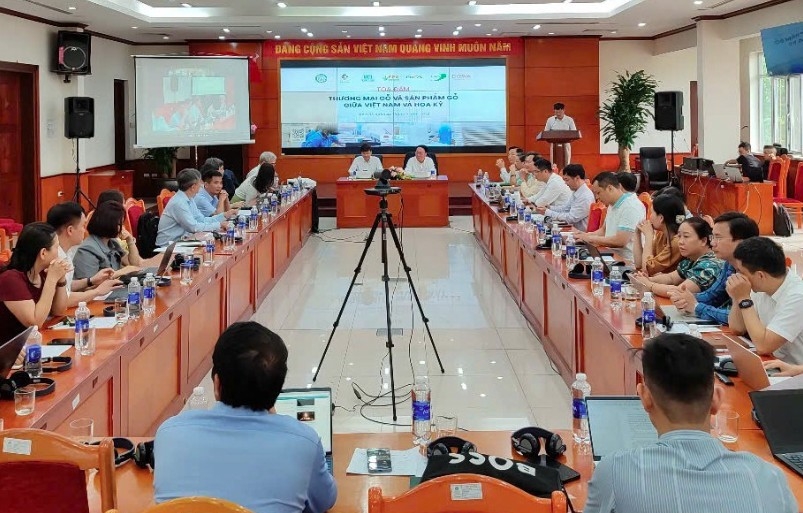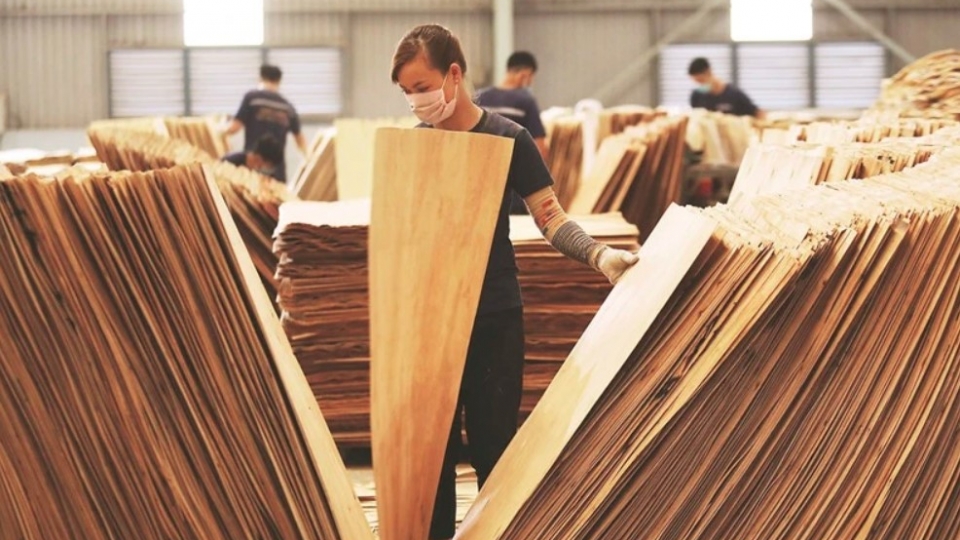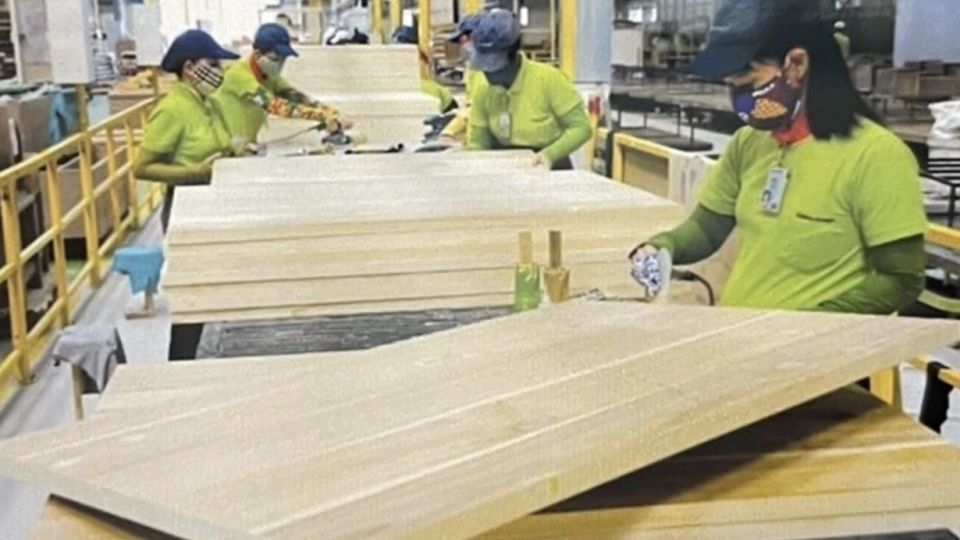Digital transformation boosts transparency, supports Vietnam-US wood trade
VOV.VN - The Vietnamese wood sector is looking to adopt digital solutions aimed at ensuring supply chain transparency and meeting US market standards.

At the Vietnam–US Wood Trade Dialogue held in Hanoi on June 24, co-organized by the Department of Forestry and Forest Protection under the Ministry of Agriculture and Environment, relevant associations, and Forest Trends, industry representatives accentuated the need to increase imports of raw wood from the US for processing and re-export to the US and other markets.
Industry representatives and associations agreed to enhance international cooperation to improve the reputation of Vietnam’s wood sector, while ensuring transparency and compliance with legal frameworks across the supply chain.
Tran Quang Bao, Director of the Department of Forestry and Forest Protection, said the sector is working with relevant agencies to issue new circulars on enterprise classification, timber traceability, and geographic zoning, expected within June. Once issued, these regulations will help establish a synchronized, transparent digital system connecting central and local levels, as well as management agencies and businesses, to meet traceability requirements.
The Department reaffirmed its commitment to working closely with enterprises and associations to demonstrate to international partners that Vietnam, despite being a tropical country, has closed its natural forests, does not use natural forest timber for export, and is making greater efforts to ensure full transparency in its wood supply chain.
Ngo Sy Hoai, Vice Chairman and Secretary General of the Vietnam Timber and Forest Product Association (VIFOREST), stated that Vietnam’s wood and wood product exports to the US reached US$9 billion in 2024, up 24% from the previous year. The US remains the largest market, accounting for 55% of total exports, followed by China (12%), Japan (11%), the Republic of Korea (5%), and the EU (4%). Key export items include wooden furniture, panels, doors, and handicrafts.
On the import side, Vietnam imported US$316.36 million worth of wood and wood products from the US in 2024, up 32.9% year-on-year, representing 11.2% of total wood imports. Major imported items include sawn wood, logs, and veneer.
Hoai stressed that US regulations require imported wood to be legally sourced, including accountability under the Lacey Act, export certificates, and self-declared certificates of origin. Vietnam has banned natural forest logging since 2014, shifting to sustainable plantations and responsible forestry. Current timber sources come primarily from 3 million hectares of plantation forests (mainly acacia and eucalyptus) and 1 million hectares of rubber trees. Certified forest areas under FSC/PEFC-VFCS continue to expand.
As of now, 700,000 hectares of Vietnam’s commercial plantations are certified, with a target of 70% certification by 2030. Tropical wood imports have dropped considerably, from over 2 million m³ in 2015 to 700,000 m³ in 2024.
The Vietnam Timber Legality Assurance System (VNTLAS), based on the 2018 VPA/FLEGT agreement, was implemented in 2020, updated in 2024, and is preparing to issue FLEGT licenses. The US is classified as a positive geographical source, providing reliable logs and sawn wood. Vietnam is also actively preparing to comply with the EU’s anti-deforestation regulation (EUDR), with the timber, coffee, and rubber sectors enhancing due diligence and geo-coordinated data provision.
Hoai affirmed that Vietnam is emerging as a top supplier of wood and wood products to the US, and one of the largest consumers of US wood. Laws such as the Lacey Act are strictly observed by both sides. Vietnam has made sustained efforts to deal with concerns over legality and sustainability.
The wood trade between the two countries not only delivers significant economic value but also offers added benefits: US consumers gain more access to high-quality, legally sourced, reasonably priced products. Both sides have also demonstrated effective dispute resolution, notably in the successful handling of the US Section 301 investigation and other trade defence cases. This positive cooperation should be sustained for mutual benefit.
To Xuan Phuc, Director of the Forest Policy Trade and Finance Program at Forest Trends, stated that several misconceptions about Vietnam’s wood sector persist. First, while some believe Vietnam imports high-risk timber for re-export, most imports serve the domestic market, and import volumes have dropped significantly. Second, Vietnam is not a transshipment hub for China’s wood supply. Annual wood imports total only about US$1 billion, with higher-risk items (e.g., panels and furniture) accounting for just US$200–300 million.
Third, the view that Vietnam’s export growth threatens its forest resources is inaccurate. The country has closed natural forests and does not use domestic natural timber for exports. Exported products are primarily made from plantation timber, rubber wood, or legally sourced imports from positive geographic regions.
Phuc urged relevant agencies to actively share information to deepen accurate understanding of the sector’s role, thereby mitigating risk and expanding markets. Authorities and industry associations should shift their approach by engaging more directly with export markets and environmental organizations, while joining international associations to strengthen Vietnam’s global wood industry presence.





